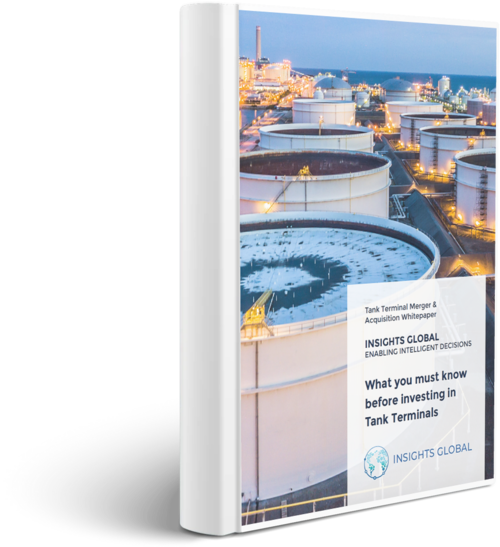Tank terminals are considered infrastructure assets with a low-risk profile that generate stable revenue streams. Therefore, it’s hardly surprising that we see a significant uptick in interest for tank terminals investments during these uncertain economic times.However, we have also seen even seasoned investors getting lost in the world of tank terminals.
The tank terminal market is very fragmented, with more than a thousand terminal operators and five thousand terminals worldwide. Furthermore, the market dynamics these terminals operate within can be quite complex, making it hard for investors to assess the true value of a prospective asset.
In this blog, we’d like to present you with the 5 biggest pitfalls to burn money in terminal investments.
1. Lacking knowledge
When assessing the market worth for a tank terminal, only looking at the bottom line will not be enough. Competitive value comes from collecting and understanding data on a terminal’s location, infrastructure, activity level, et cetera.
That’s why it’s key to get access to industry-specific knowledge and get a complete picture of the asset you are interested in.
2. Paying a price which is too high
Given the complexity and dynamic of the Tank terminal industry, make sure you have a solid understanding of the key performance indicators of the terminal. What are the throughput levels? What are excess throughput levels? How are contracts being structured? What are the occupancy rates of the jetties?
Only if and when you partner with an advisor who understands the industry and will provide you with the essential and detailed insights, you can build your investment case and valuation model, minimizing the risk of bidding too high.
3. Lacking an exit plan
Even though this is true for all sorts of investments, you’ll need to pair a sound investment plan with a solid divestment strategy. Knowing when to sell is just as valuable as knowing when to buy. When market dynamics are changing and divestment of your assets is the smart move to make, a solid exit strategy is invaluable when it’s time to act.
4. Low probability of winning the bid
Being a successful investor is not only about being able to identify a good investment opportunity; it’s also about knowing when to pass on a bid.
If there is too much competition or if you expect you will be willing to pay the expected price, it is better to exit the process at an early stage. By using a phased approach, you’ll never end up investing a tremendous amount of time and money on a bid that would never be successful.
5. Expecting high returns for low-risk investment
You can’t have your cake and eat it, too. While investments in infrastructure assets like storage terminals are often a great addition to your investment portfolio, be sure to have realistic expectations of your return on investment. While it may seem a bit ‘boring’ in the world of stock shorting, high-frequency trading and venture capital, investing in tank terminals is considered a low-risk investment with respectable returns.
What’s next?
Now you know what you shouldn’t do, you might want to know what you should do to become a successful investor in the tank terminal industry.


